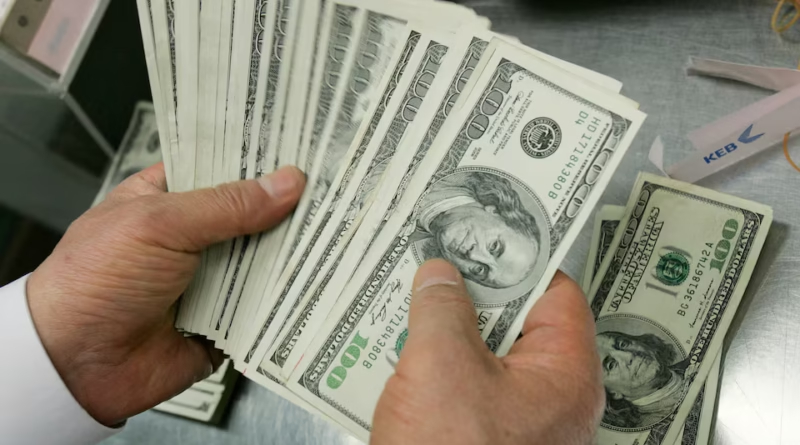The Impact of the U.S. Dollar’s Value on Developing Countries
Introduction
The U.S. dollar is the most powerful currency in the world. It is used in global trade, international loans, and even in saving accounts in many countries. When the value of the dollar changes — whether it becomes stronger or weaker — it affects not only the United States but also developing countries around the world.
In simple words, when the dollar becomes strong, it means one dollar can buy more of other currencies. When it becomes weak, one dollar buys less. For rich nations, this might just affect trade or tourism, but for developing countries, the impact is much deeper.
Let’s explore in easy language how the value of the dollar affects economies, businesses, and people in developing countries.
1. Why the Dollar Is So Important
Before understanding its impact, let’s see why the dollar matters so much.
-
The dollar is used in about 80% of global trade transactions.
-
Most international loans and oil deals are priced in dollars.
-
Central banks of many countries keep reserves in dollars to stabilize their local currencies.
-
When investors feel uncertain, they often buy dollars because it is considered a “safe currency.”
Because of these reasons, when the dollar’s value changes, it sends waves across the entire global economy — especially in developing nations that depend on imports, exports, and foreign loans.
2. When the Dollar Becomes Strong — What Happens
A strong dollar means the U.S. currency gains value compared to other currencies like the Indian rupee, Pakistani rupee, Indonesian rupiah, or Nigerian naira.
A. Imports Become More Expensive
Developing countries buy many goods from abroad — fuel, machinery, medicine, technology, etc. Since these items are mostly priced in dollars, a strong dollar means:
-
Their local currency buys fewer dollars.
-
Import prices go up.
-
Inflation increases at home.
Example:
If oil costs $80 per barrel, and the dollar becomes stronger against your local currency, you’ll pay more in your own currency for the same oil. This raises transport and electricity costs too.
B. Local Currencies Lose Value
When the dollar strengthens, investors move their money to the U.S. to get better returns. This causes the currencies of developing countries to weaken.
-
Weaker local currencies make it harder for people to buy imported goods.
-
It increases inflation and reduces purchasing power.
C. Paying Off Debt Becomes Harder
Many developing countries have borrowed money in U.S. dollars from foreign lenders or organizations like the IMF or World Bank.
When the dollar becomes strong:
-
The cost of paying back that debt increases.
-
Governments need more local money to buy the same amount of dollars.
-
Budgets for education, health, and infrastructure shrink.
Example:
If a country owes $1 billion, and its local currency falls 10% against the dollar, its debt becomes 10% more expensive to repay.
D. Exports Can Become Cheaper — But It’s Not Always Good
A strong dollar can make exports from developing countries cheaper in global markets because their currencies are weaker.
For example:
-
A textile exporter in Bangladesh may sell clothes cheaper to U.S. buyers.
-
This can help boost exports and jobs.
But this benefit is often small because:
-
Import costs for raw materials rise.
-
Transport and energy costs increase.
-
Inflation reduces profits.
So, while exports might rise slightly, the overall economy still feels the pressure of a strong dollar.
3. When the Dollar Becomes Weak — The Other Side
A weak dollar means the U.S. currency loses value compared to others. For developing countries, this can bring both relief and new challenges.
A. Imports Become Cheaper
If the dollar weakens, developing countries can buy goods like oil, machinery, and medicine more cheaply. This helps reduce inflation and supports local growth.
B. Currencies Become Stronger
A weaker dollar often strengthens the currencies of developing nations. This makes foreign travel, education abroad, and imported products more affordable for citizens.
C. But Exports May Suffer
When the dollar is weak, the exports of developing countries become more expensive for U.S. buyers. This can reduce foreign demand, especially for countries that rely heavily on selling products to America.
D. Foreign Investment Might Decline
When the dollar is weak, some investors earn less profit from their foreign investments, so they may move money out of developing nations. This can reduce investment in industries and infrastructure.
4. Impact on Everyday Life in Developing Countries
A. Rising Cost of Living
A stronger dollar increases the price of imported goods — fuel, cooking oil, wheat, medicines, electronics — almost everything people use daily.
This means:
-
Families spend more on essentials.
-
The middle class and poor struggle more.
-
Savings lose value as prices rise.
B. Job Market Pressure
Businesses that depend on imported materials face higher costs and sometimes reduce staff to control expenses.
At the same time, exporters may face unstable demand. This creates uncertainty in the job market.
C. Government Budgets and Public Spending
When debt repayment in dollars becomes expensive, governments often:
-
Cut public spending.
-
Delay development projects.
-
Increase taxes.
This slows down growth and affects public services like education and healthcare.
5. The Role of the U.S. Federal Reserve
The U.S. Federal Reserve (Fed) plays a huge role in global money movement.
-
When the Fed raises interest rates, the dollar usually strengthens.
-
When it cuts rates, the dollar weakens.
Developing countries closely watch these decisions because they affect everything from borrowing costs to trade flows. A single interest rate hike in the U.S. can trigger financial pressure in multiple developing nations.
6. How Developing Countries Can Protect Themselves
A. Building Stronger Reserves
Countries can keep more foreign reserves in dollars to manage sudden currency swings. This helps stabilize the local currency when the dollar rises.
B. Encouraging Local Production
Producing more goods domestically reduces dependence on dollar-priced imports. This supports local industries and protects against price shocks.
C. Using Local Currencies for Trade
Some countries are now trading with neighbors using local currencies instead of dollars. This lowers their risk from dollar fluctuations.
D. Managing Debt Wisely
Nations should try to borrow in their own currency or lock in long-term interest rates to avoid sudden repayment problems when the dollar strengthens.
E. Attracting Long-Term Investment
Stable policies, better governance, and low corruption can attract investors who keep money for years, not just short-term profits. This brings stability to the economy.
7. Real-World Example: The 2024–2025 Dollar Surge
In recent years, the U.S. dollar became very strong as the Federal Reserve increased interest rates to control inflation. As a result:
-
Countries like Pakistan, Sri Lanka, and Egypt faced higher import bills and weak currencies.
-
Latin American nations struggled with expensive debt payments.
-
Oil-importing nations saw their inflation rise due to costly energy imports.
At the same time, exporters in countries like Vietnam and Bangladesh benefited slightly because their goods became cheaper in U.S. markets. But overall, most developing nations faced economic pressure.
Conclusion
The U.S. dollar is like a heartbeat of the global economy — when it speeds up or slows down, every other part of the world feels it.
For developing countries, the dollar’s strength can bring both chances and challenges. A strong dollar raises import costs and debt burdens, while a weak dollar may reduce exports and investment.
The best path forward is balance — building strong local economies, producing more goods at home, and managing debt smartly. In today’s connected world, understanding the power of the dollar helps countries prepare for global changes and protect the daily lives of their people.

